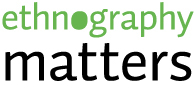The Ethnographer’s Complete Guide to Big Data: Conclusions (part 3 of 3)
As promised here is the final installment of my short series about ‘big data.’ I started out by declaring myself a ‘small data’ person. My intention was to be a bit provocative by suggesting that forgoing or limiting data collection might sometimes be a legitimate or even laudable choice. That contrast was perhaps overdrawn. It seemed to suggest that ‘big data’ and ethnographic approaches were at the opposing ends of some continuum. ‘How much’ is not necessarily a very interesting or relevant question for an ethnographer, but who among us hasn’t done some counting and declared some quantity (1000s of pages of notes, hundreds of days in the field, hours of audio or video recordings) that is meant to impress, to indicate thoroughness, depth, effort, and seriousness?
So the game of numbers is one we all probably play from time to time.
Now to answer my few remaining questions:
1) How might big data be part of projects that are primarily ethnographic in approach?
My first exposure to ‘big data’ came from a student who managed to gain access to a truly massive collection of CDR (call detail record) data from a phone network in Rwanda. Josh Blumenstock was able to combine CDR data with results from a survey he designed and carried out with a research team in Rwanda to gain insights into the demographics of phone owners, within country migration patterns, and reciprocity and risk management. I was terribly excited by the possibilities of what could be found in that kind of data since I had been examining mobile phone ownership and gifting in nearby Uganda. I wondered how larger patterns in the data might reflect (or raise questions) about what I was coming to see at the micro-level about phone ownership and sharing, especially its gendered dimensions. Indeed Josh’s work showed a strong gender skew in ownership with far more men than women owning phones and women phone owners more affluent and well-educated. My work explained the marital and other family dynamics that put far fewer phones into the hands of women than men.
However, combining these two approaches is more a standard mixed methods approach than anything new. Is something more innovative than that possible? Read More…






Recent Comments